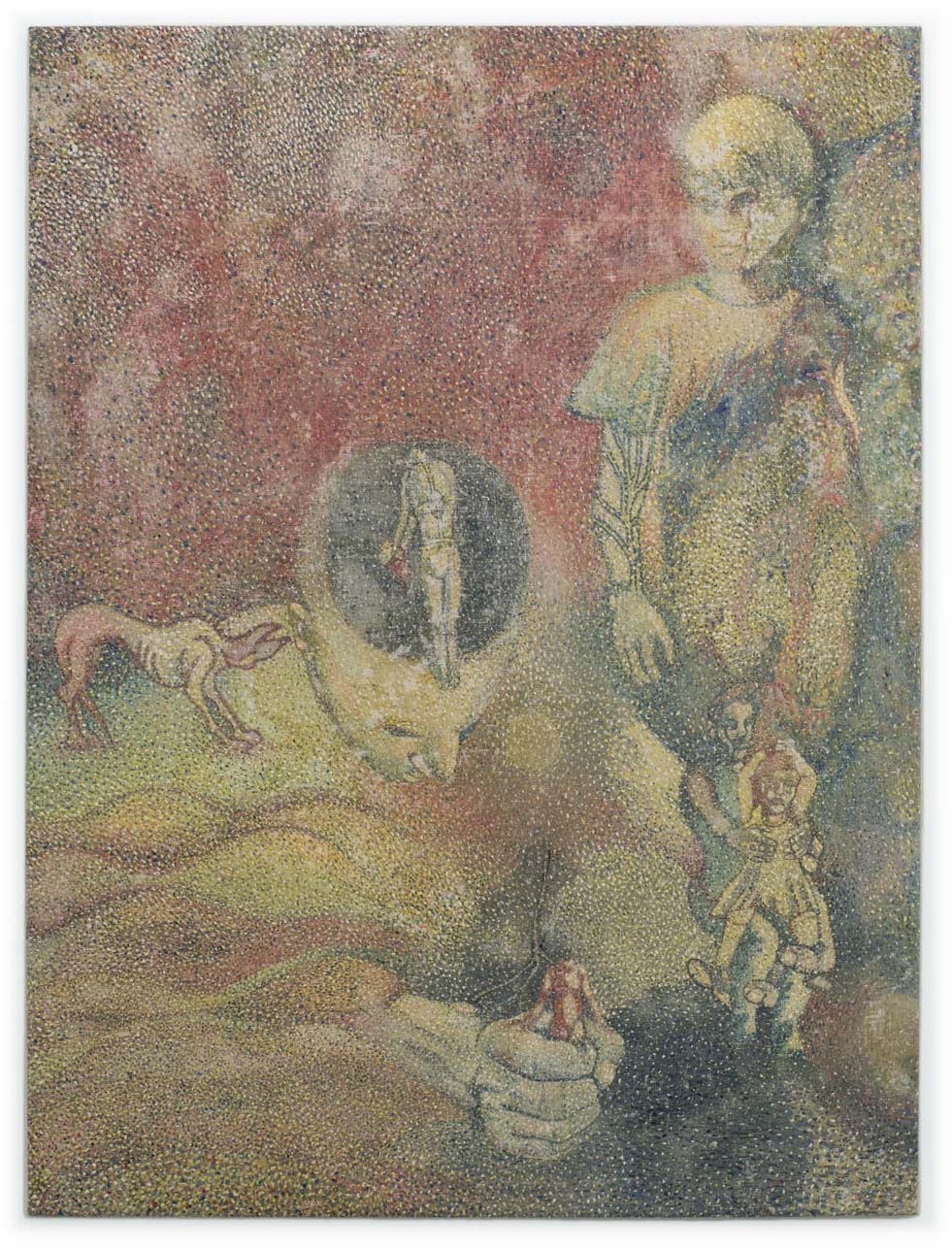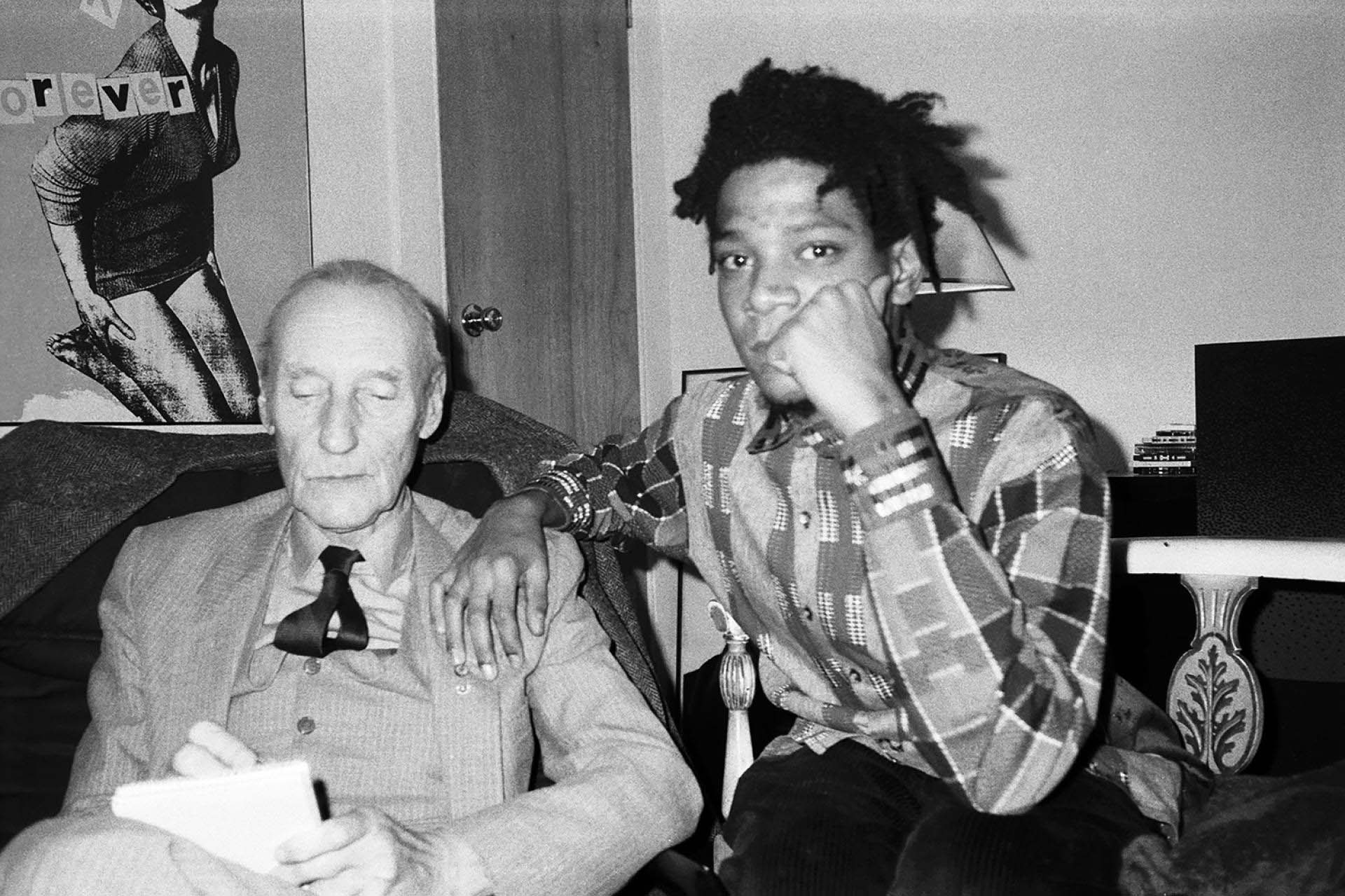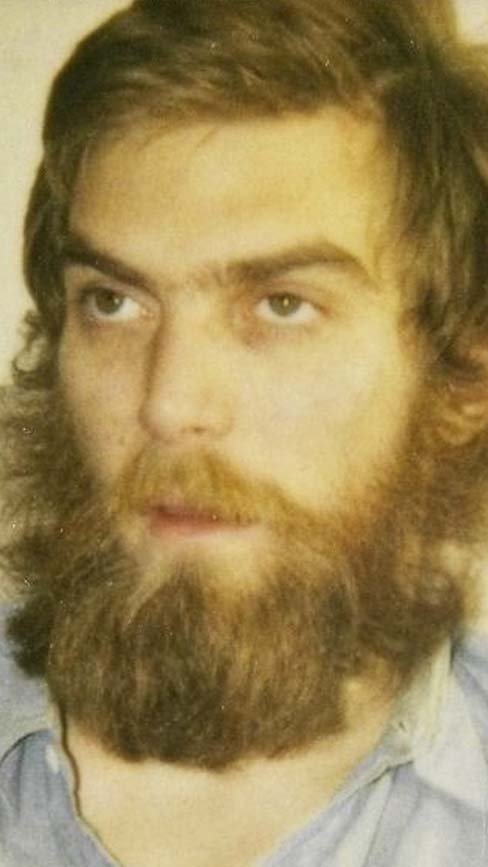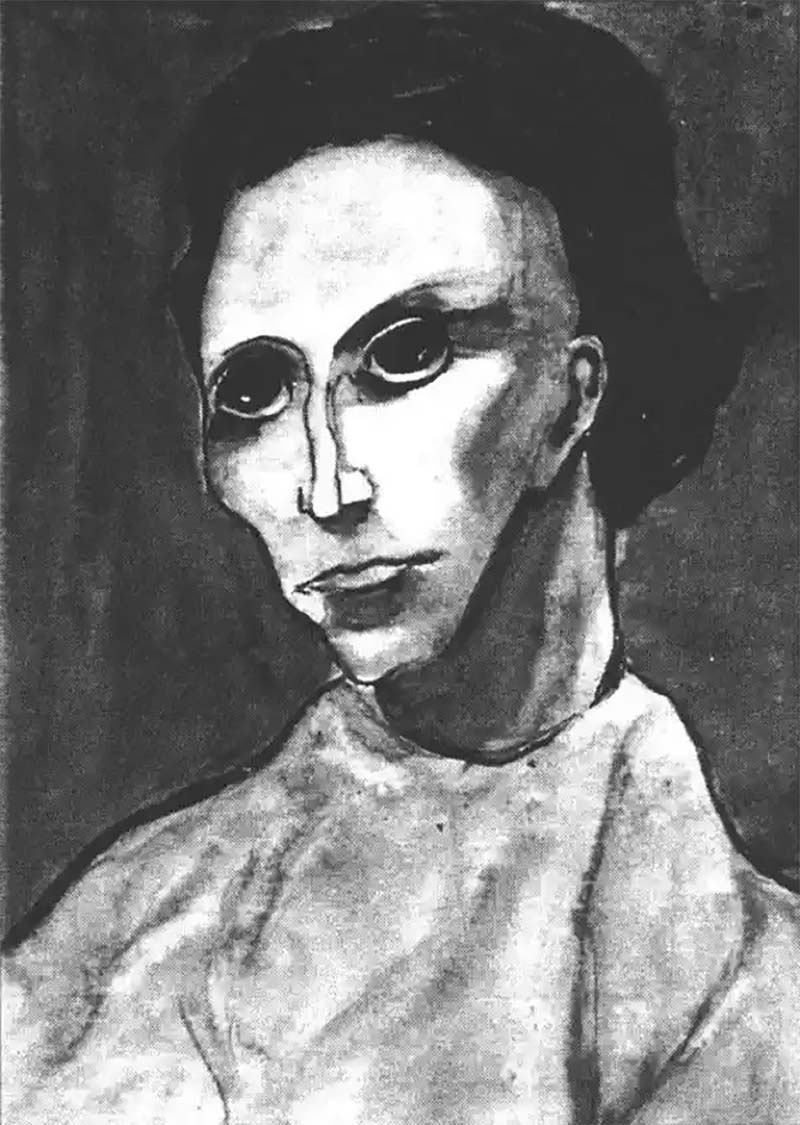ADAM LEHRER is a New York-based writer, art critic, and artist, the founder and co-host of the System of Systems podcast and the founder and curator of the Safety Propaganda substack. I spoke with Adam prior to the release of his new book Communions — published by Hyperidean Press (available here) — a sort of literary collage of semi-fictional, cryptically biographical communions with the ghosts of dead junky artists. Having followed Lehrer’s work for a couple years now, I was very much looking forward to having a conversation with him, as he’s one of the very few outspoken art critics open to enjoying and appreciating art on its own terms, without any of our contemporary ideological constraints. Through his written, spoken, and tweeted work, Lehrer dismantles propaganda with counter-propaganda, intelligence with counter-intelligence, chaos with counter-chaos. Lehrer is, in short, our guy, not least of all because he’s no one’s guy. In this interview, we discussed over Zoom the value of the written word in our image-saturated mediascape, the importance of “safety propaganda” to a control society, and, of course, his new book Communions and the various characters contained within it. It’s a wonderful book by a writer for whom I have nothing but gratitude.
*
RYAN SIMÓN: Especially on social media, the visual arts feel so oversaturated right now. And there’s no commitment or discipline involved in consuming that kind of media — creating that media, sure, but consuming it feels very passive and anaesthetic in that space — whereas writing and reading does involve, you know, some dedication and discipline and a level of commitment. There’s something almost inherently transgressive about that, where you have to socially disengage, like a little Unabomber, to write and read, and at a time when constant social engagement is of the utmost value.
ADAM LEHRER: For sure. I think that — and this is, of course, not to discount the great artists and painters and even photographers that are still out there doing their thing, but the culture of it is totally mediated by Instagram. It’s very easy to get interested in art perhaps more so than it ever was, but it’s become Tumblrfied where you’re just sort of jamming images into your brain. Some of those artists came up ten years ago doing internet-referential painting, and a lot of it was really great and sort of radical for a hot minute, but now that’s the only thing you see: 22-year-old painters making pretty big canvases of shit like Google image searches that they found were clever. There was a return to Symbolism a few years ago, which I still think that there’s some good artists in that — in fact, the cover of my book, which is this painting that I own right here:

…it sort of falls within that Symbolist referential art. But then there’s that — what is it, TZVetnik? that Eastern European art blog — they post some great shit, but at the same time there’s such a trend machine in art now, I feel like there’s 50 artists I learn about every single day that are doing this sort of pseudo-demonic-mystic-energy thing. It all demands an Internet-fried cultural engagement, as many things do. Writing, for what it’s worth, to get into it you have to read — you would hope, I don’t know if that’s true anymore [laughter] — which is time-consuming and laborious. Of course, painting is laborious, too, but there is a difference in the level of engagement.
SIMÓN: On that note, I’ve recently started reading Crash by J.G. Ballard after I’ve heard you mention it several times —
LEHRER: Oh sick.
SIMÓN: It’s so good.
LEHRER: It’s the best.
SIMÓN: — and the standout quote from the book that inspired the name of your substack Safety Propaganda: “After being bombarded endlessly by road-safety propaganda it was almost a relief to find myself in an actual accident.” I love that. Getting into addiction, the central topic of your book, does that quote have any meaning in relation to addiction for you.
LEHRER: I’d say — I mean they’re connected but — I’d say that what I meant with “Safety Propaganda” was a bit broader than just addiction. I think Safety Propaganda is basically the standard governing orthodoxy for the entire world right now, and in a social relation that is absolutely inescapable. Safety Propaganda wouldn’t have happened if not for the pandemic. I’d say that like me and six other writers that I like and are friends with basically came up during the pandemic. Obviously, there’s something that happened there — for me, it was the amount of time I had to write and to think and read. I tried to make the best of it, even though I despised it with every fiber of my being. Safety Propaganda, to me, is the idea that safety is more important than freedom, or that we should be so cognizant of being safe, which is ultimately an abstraction and unattainable, to the extent that we live this neutered neolib grey soulless existence. I talk about this a lot, but I felt that this was a thing bogging down culture and art. It sort of cooled off for awhile at the start of the pandemic, but then George Floyd happened, and the art — all art, every single fractional industry of the culture industry itself — became this hyper-doctrinal ultra-liberal bougie moralist “you have to think this way or you don’t get a seat.” Inevitably, there were three different roads you could take with this: you just go for it, you accept it as true, make your money, grift off of it as much as you can. There were other people that took the smartest track which was “I’m going to stay the fuck out of this, I’m not going to post anything about it,” and then there were those who, like me, were definitely loudly opposed to it — I mean, I hate being fucking propagandized. We’re propagandized from every single angle now —
SIMÓN: It’s relentless.
LEHRER: Yes, it’s relentless — and art has always had a function as propaganda, there’s no ifs ands or buts about it… BUT. There at least used to be some variation from artist to artist to artist to concept, or whatever, that you can enrich yourself intellectually and spiritually by engaging with these different ideas, allowing yourself to be psyopped from different directions, if you will. But the average artist last summer, their ideas were about as interesting or thoughtful or nuanced as Don Lemon’s were on a nightly broadcast, and it became really oppressive. And so Safety Propaganda was my way of saying that this is going to be a space where safety is not only not considered, it’s outright scorned as a concept. It’s a place where propaganda will be demystified and counter-propaganda will be jammed in your direction.

SIMÓN: Did you start writing Communions during pandemic?
LEHRER: I’ve been wanting to write — I mean, I’m really into addiction books, as a subgenre, and addiction films — you know, Burroughs, movies like Trainspotting, Jean Cocteau — and then just artists who were junkies are personally interesting to me. Of course, I’ve been clean off heroin myself almost eight years now, and so I’ve wanted to write a book about addiction, about me, but not a memoir and not another sort of “oh, here’s a book about a litany of junkies,” because that’s been done well many, many times before by, like, Selby Jr. and whoever. So, I’ve been playing around with these short story ideas in which I use these famous artists as characters — I hadn’t really published any of them, but I have a ton — and I was playing around with this form when, oddly enough, I was working a day job that was really awful, hours-wise, but quite easy, labor-wise, and I would sit on my phone and play around with language on my notes app. I liked some of what I’d written, some were kind of weird: like I’d put Artaud in the modern world and he’d be dealing with today’s social problems, with the internet, he’d have a Twitter account… Thinking about this addiction thing, I really wanted to loop together my work as an art critic into creative fiction. The first thing I wrote for this [Communions] was actually four years ago, it was a fictional conversation between myself and Kurt Cobain. In the chapter, I have a séance, he shows up, and we have a long-winded conversation about his life. I actually submitted it with the manuscript but we cut it out.
SIMÓN: I was surprised to see Kurt didn’t make the cut, but I suppose the Basquiat chapter, for me, scratched that itch and from a similar, but more interesting angle — I mean, Kurt Cobain is interesting, but your approach to Basquiat’s story felt really fresh.
LEHRER: I absolutely love the Basquiat chapter. That’s one of my favorites of the book just because it was fun to document like a version of his psychology, or at least how I imagine it. His branding now is so different than he actually was. His family really cashed in on his estate, so you have this like “woke Basquiat” on T-shirts and shit —
SIMÓN: You have fucking Jay-Z wearing his hair.
LEHRER: All that stuff, yeah [laughter] — but Basquiat was actually very self-involved, had a mean streak like you wouldn’t believe, and he wasn’t really committed to anything other than his own sort of domination of his craft. Whereas the reason we cut Cobain is because his biography is too well-known. My editor Udith’s advice was like, “My mother knows Kurt Cobain’s biography, she’s read this thing” and so there’s not much open space to recreate him. The manuscript was longer when I first turned it in — I think it was like 300 pages, and now it’s around 220 — so we cut a substantial amount, but I think for the better for sure.

LEHRER: Anyways so — once the pandemic happened, I instantly was like, “I’m a fucking writer, let me just use this time to write.” More than any point in my life, I was just writing all day everyday, and not only that but I was loving the shit that I was writing. I felt a real sense of pride in the work I was producing in a way I never felt with visual art, which always made me feel self-conscious and overexposed. I was just obsessed with the work I was doing, and I was like, “Alright, no more hesitation.” And after System of Systems and after the essay I did for Caesura magazine, “Art’s Moral Fetish,” Hyperidean Press reached out and asked if I wanted to do a book project. I already had this thing — heroin — and I had that Cobain chapter, and I was thinking about like “ghost stories” — ghost stories about dead junky artists — and instantly Udith was like, “Yeah, that sounds fucking sick.” I got the deal and instantly started collecting biographical materials, went into research mode, and then within a month and a half, around last December, I was off to the rafters. You know, I had a list of like 20 people I wanted to be on there, but that changed a shitload. I think the final product has only like six of those 20, with some other people subbed in.
SIMÓN: Damn. What was your selection process there?
LEHRER: First of all, I wanted the book to be formally diverse to play around a lot with narrative structures. If it was straight short stories like “A day in the life of this, a day in the life of that,” I think the thing would’ve gotten belabored. Then the main thing was “Do I have a connection to this person’s work?” and then most important was “Do I have an idea of what aspect of them, or from what angle, I’m going to write about?” Often, the person themselves informed the structure of the chapters, so for, like, Dash Snow, it had to be that last night [of his suicide]. His whole life, the whole New York MTV-ification of this guy kind of robbed him of, for one thing, dying a great artist — he kind of died a meme before memes were a thing — and he died alone. That alone has to be the end of his life. Whereas with Darby Crash, the whole chapter is basically his Dying Dream, if you will. And the reason I wanted to do that is because Darby Crash’s writing is… how do I say this… it comes from this totally drug-fried, infantile mind, and, yet, as a poet, he’s fucking genius. This guy accessed language through oblivion, that was his tunnel to the divine, or the sublime, or whatever, and so I wanted to find his mind at its most clouded and fractured, which is, of course, as it’s shutting down little by little.
SIMÓN: Well, it was fun to read, seeing you dive into all these different characters — Crash, Basquiat, Ol’ Dirty Bastard — diving into their psyches. With artists like Zoë Tamerlis and Anna Kavan, you’ll have these tender moments, followed up with, you know, the abrasiveness of Darby Crash or Ol’ DB. And what was funny was, after having listened to your podcast and hearing the voice of Adam Lehrer, I felt I heard Adam Lehrer the most in, like, the Ol’ Dirty Bastard passages.
LEHRER: [laughter] Yeah, that’s interesting. That’s cool.
SIMÓN: But with those guys — with Crash, this sort of drug-fried “infant,” it could’ve easily just been this unflattering portrait of the guy, this pornographic example of degeneracy or whatever, but I sympathized with him quite a bit. He was giving voice to this little worm inside of me — same with Basquiat, with his middle-class superiority complex. All of that really resonated with me. It felt very dignified and humanizing, you handled the variously complicated headspaces of these characters so well. Which, which… it’s just quite impressive, frankly.
LEHRER: Oh man, thank you. Yeah, you know, a friend of mind, when I started writing this, he was like, “I don’t think we need another vice-signaling addiction book.” And I was like, “No no nono this is not a vice-signaling addiction book.” The main thing I’m looking at here is alienation and vulnerability. Mine, of course, and also these peoples’ whose work I’m addressing. There were a few things that I didn’t plan to reoccur, but nevertheless did reoccur, and one was that a lot of them either had a spiritual or physical ailment that they were very rationally treating through opiates, whether it was Anna Kavan’s melancholia or Modigliani’s bad fucked-up back. The other thing is this idea of… you know, a lot of people are like art for art’s sake — which is cool — but I’ve always been very fascinated in the idea of how the artist constructs their own persona and narrative. This is something I’m personally very interested in and schiz out a lot about. Like, putting yourself out there on a podcast and all this writing and stuff, you end up self-analyzing a shitload. Every time I smoke a joint, I end up thinking, “Oh fuuuck why am I even a public figure? Fuck this shit!” You know? [Laughter] And what I think with a lot of the people in this book, especially Dash, Basquiat — ODB for sure — is that their greatest artworks were basically themselves.


SIMÓN: I didn’t know what to expect picking up the book. I suppose I anticipated a chapter-by-chapter assessment of each artist’s work — and the first chapter does feel like a kind of assessment of Burroughs’ work before you move onto the semi-fictional psychologies of these artists. But with Burroughs’ work and his “cut-up” writing technique, you establish an aesthetic, theoretical through-line of opiate addiction that, despite the polar ups-and-downs of these stories and of addiction itself, penetrates and weaves all these stories together. The Burroughs line “Language is a virus from outer space” that you repeat in the beginning and the bending fiction/non-fiction throughout the rest of the book, it all feels very reflective of our hypermediated schizophrenic age in general.
LEHRER: Yeah, Control Society. The way I understand Burroughs is that he was quite naturally shamanic and mage-like — he’s like a fucking druid. Kerouac wrote about Burroughs in such a way: the guy seems unreal. He’s literally like a priest-like figure. But heroin specifically, junk addiction — it subsumes you in a very material life, which is: you wake up, you scheme, you figure out how to get the money, and you get the sickness away. It becomes this contained cycle of sickness and health, and nothing outside of that world. That is actually what Burroughs needed to, like, hone his druidic energy onto reality, that allowed him to develop such a cogent kind of critique of control systems themselves. There’s a reason why Foucault and Deleuze both wrote a ton about Burroughs in their essays on Control Society. He had this very interesting outlook, his natural disposition was towards “outside” — outside reality — but heroin, specifically, ground him within it, so he had this sort of outsider’s perspective on the immediate world around him. That Burroughs chapter is very much how you said. I consider him to be the greatest theorist, the greatest artist of addiction — specifically opiate addiction. I didn’t want to write about all addiction, I wanted to write about specifically opiate addiction, which I consider to be its own sort of narrative — it’s not like your other addiction narratives, it’s very specific. By doing a sort of literary analysis — not a straight literary analysis, there’s still flourishes of untruth and collage in that chapter — it was very much about defining the themes that I would then return to in the following chapters.
SIMÓN: I can’t remember who said it but there’s that quote about how you can cut to the core of any culture or society by understanding its relationship to pain. With our opioid crisis, which is a crisis of “pain relief” essentially, that can only happen to a culture that has so scandalized pain. Which gets back to your ideas about safety and safety propaganda: that being in pain is…
LEHRER: Intolerable.
SIMÓN: Exactly — and that to live in a zombified state is preferable to pain.
LEHRER: Another thing that I think is totally true — and this is after having spent years on opiates — is that the psychic pain that it kills is more potent than the physical pain. Don’t get me wrong: when I was using regularly, I was like a total fitness head at the same time. People wouldn’t even know how gone I was, they’d be like, “Damn, you’re looking ripped right now!” I would use, go on a ten-mile run, and then do fucking squats and not feel sore afterwards. I was at that point 155 pounds and deadlifting 495.
SIMÓN: Jesus.
LEHRER: The main difference, though, that I’m getting at is that opiates are for people who are looking to make their lives just a little easier. The primary function is to ease the edge of whatever. I still think to this day it is the most potent anti-anxiety medication. I’ve never been prone to depression per se — at least not melancholic depression — but since I was very, very young, I’ve had intense anxiety. After writing about all these people, I think that’s a thing they all shared, too: loud, loud inner voices — and an almost physical sensation of nervousness. To this day, if I get a weird ache, just that achiness you feel as an aging person, my first thought is always, “Oh, I wish I could just zap this out.”

LEHRER: I did hope the book, to some extent, would obviously be read against the opiate epidemic, specifically. Especially during the pandemic when opiates are still killing way more fucking people than this fucking disease is, and it’s something that personally affected me, that took three friends from me —
SIMÓN: Yes, you called it perfectly in the book, that the quote-unquote “heroes” of this pandemic — Johnson & Johnson, Pfizer, and so on — are the causes of a much worse epidemic within the pandemic.
LEHRER: Yeah, exactly. Even though I don’t address it specifically beyond the last chapter when I document my own use, I did want it to be read in regards to the opiate epidemic, because I think, to this day, I genuinely think it was a crime purposefully committed against the American working class. I think they purposefully made people addicted to drugs. I think they absolutely knew that nobody needed 80 milligrams of Oxycontin at once to treat their backs. And here’s the thing: heroin addiction has always been a thing. But it wasn’t a thing that everybody knew someone who struggled with it, and that’s where it’s gotten now. We all know people who’ve had this one fucking problem. But I didn’t want to write some cringey journalistic activist book about the opiate crisis. I thought I’d just write about opiate addiction, but from this very neutral perspective.
SIMÓN: It is satisfying seeing it called out, to attack big pharma and all that, but I’m happy you took the route you did. Nina Powers put it well in the book’s afterword, that drug use has just been so desacralized. If there is an issue, that’s it. You know, removing drug use from a sacred context and completely transforming it into this endless party, this state of infinite jest —
LEHRER: Or for optimizing work.
SIMÓN: Yes, with the concept of “nootropics” and microdosing and shit. The point there shouldn’t be performance optimization, it should be ego death — becoming one with the cosmos.
LEHRER: Definitely, psychedelic drugs are for limit experiences. They’re very much meant to shatter yourself, potentially have a cry about the meaninglessness of the universe, and to come back stronger than you were before for experiencing the trauma. Psychedelic experiences are supposed to be traumatic. Lot of people say, “Yeah, they’re so fun!” But you also can tend to tell those people are fucking nuts. [Laughter] They’re not supposed to be fun or helpful as such — to the degree that they are helpful, they make you aware of uncomfortable truths that are hidden to you. Even historically with opiates, the idea of opiate as escapism is healthier than opiate as treatment for backpain so I can get back to my back-breaking labor.
SIMÓN: Who’s that professor claiming to use heroin safely and responsibly, as like a positive life habit…
LEHRER: Oh, Carl Hart.
SIMÓN: Yes, Carl Hart. I was shocked by that, the audacity of that guy to apply the microdose treatment to fucking heroin. [Laughter] I just don’t see that happening.
LEHRER: Yeah, that guy is very obviously an intelligence asset.
Read the Adam Lehrer INTERVIEW in AMERICAN VULGARIA Magazine Issue #1: BUY now
*
Adam Lehrer’s book Communions is available at Hyperidean Press here.




